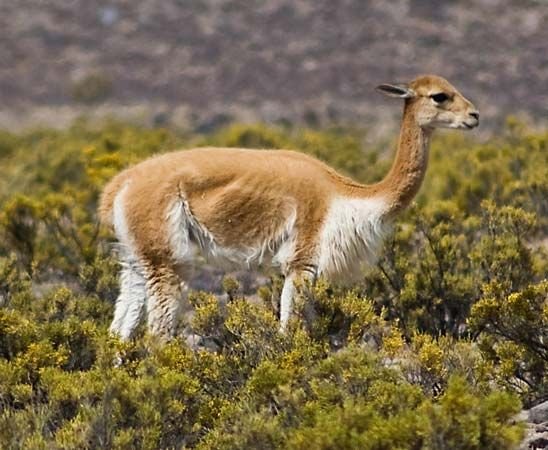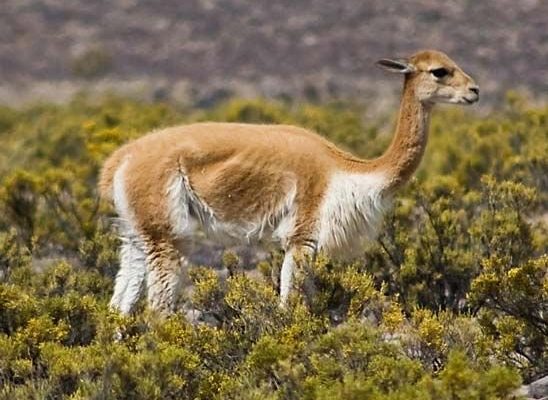
The first thing to know is that vicuñas are generally quite shy and non-aggressive. They tend to keep to themselves, grazing peacefully on high-altitude grasses. This might make you think, “So they’re harmless, right?” Well, the truth is a bit more nuanced. While they are not known to attack humans without provocation, there are certain situations where they could potentially become a bit defensive. Let’s dive deeper into this intriguing topic.
Understanding the Vicuña’s Nature
Vicuñas are often described as timid and reserved. They thrive in the harsh terrains of the Andes, where they can be found roaming freely at altitudes ranging from 10,000 to 15,000 feet. Picture them as the introverts of the animal kingdom—they avoid confrontation and seek harmony wherever they go. Their primary defense mechanism is their speed and agility. When threatened, they can sprint away at impressive speeds, which is often enough to keep them safe from predators.
You might be wondering what triggers a vicuña to feel threatened. Generally, they are easily startled by loud noises or sudden movements. If they perceive danger—be it from a human, a dog, or a sudden rustle in the bushes—they’re more likely to run away than to stand their ground. The key takeaway here is that their first instinct is flight, not fight.
When Do Vicuñas Show Aggressive Behavior?
While vicuñas are not inherently dangerous, there are certain scenarios where they might display aggressive behavior. For example, during the mating season, male vicuñas can become territorial. They may chase off other males who intrude into their space. This is a typical behavior seen in many animals; protecting territory is a natural instinct.
In addition to territorial disputes, a mother vicuña will fiercely protect her young. If she perceives a human or another animal as a threat to her cria (the name for a baby vicuña), she may become defensive. Although such cases are rare, they can lead to unexpected confrontations. It’s always best to respect their space, especially if you encounter a mother with her young.
Can Humans and Vicuñas Coexist Peacefully?
Absolutely! Vicuñas, in their natural habitats, rarely have interactions with humans. They thrive in remote areas where human presence is minimal. If you’re planning to observe them in the wild, it’s crucial to do so from a distance. This not only keeps you safe but also helps maintain the vicuñas’ natural behavior.
If you find yourself in a situation where you’re near vicuñas—like on a hiking trip in the Andes—here are some tips to ensure a peaceful encounter:
- Keep your distance: Use binoculars for a better view.
- Stay quiet: Loud noises can scare them off.
- Avoid sudden movements: This can startle them, potentially causing them to flee.
- Respect wildlife regulations: Always follow local guidelines when observing vicuñas.
Vicuñas can be charming to watch, and with a bit of patience and respect for their space, you can enjoy their beauty without putting yourself in harm’s way.
What to Do If Approached by a Vicuña?
Coming face-to-face with a vicuña is a unique experience, but it’s essential to approach the situation wisely. If a vicuña approaches you, remember: they are more curious than aggressive. However, your initial reaction is crucial. Here’s what you should consider:
1. **Stay Calm**: Fast movements or loud noises might scare or provoke them.
2. **Do Not Feed Them**: Offering food can lead to unwanted behavior, making them more reliant on humans.
3. **Back Away Slowly**: If the vicuña seems too close for comfort, slowly backing away is your best bet.
It’s all about understanding their behavior. Vicuñas are not looking for trouble; they simply want to go about their lives in peace. Respect their space, and you’ll find they’re not a threat at all.
Comparing Vicuñas to Other Camelids
If you’ve heard of vicuñas, you might also know about llamas and alpacas. While they’re all part of the camelid family, their behaviors and temperaments can differ significantly.
– **Llamas** are often used as pack animals. They can be more assertive and, in rare cases, aggressive if they feel threatened or if their leader is challenged.
– **Alpacas**, on the other hand, are usually more docile. They tend to be friendlier and are often kept as pets or for their wool.
Vicuñas, in comparison, are wild animals with a strong instinct to flee rather than fight. Each of these animals has its own quirks, and understanding those can help you appreciate their unique characteristics.
So, can the vicuña be dangerous to humans? Generally speaking, no. These enchanting creatures are more likely to run away than engage. Their natural instincts lean towards avoiding confrontation, which makes them fascinating to observe from a distance.
If you’re lucky enough to encounter a vicuña in the wild, remember to respect their space. Understand when they might feel threatened, and appreciate the beauty of watching them without intruding on their lives. By doing so, you’re not just keeping yourself safe; you’re also helping preserve the delicate balance of their natural habitat. Connecting with wildlife is about understanding and respecting their boundaries, and vicuñas are no exception.

